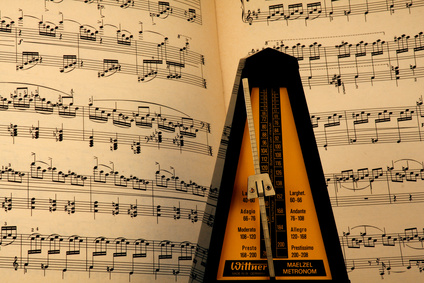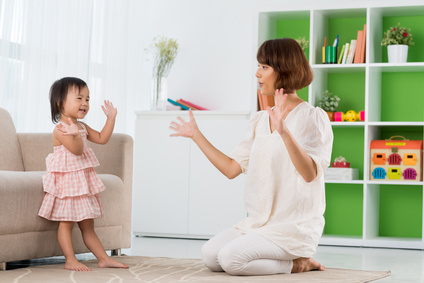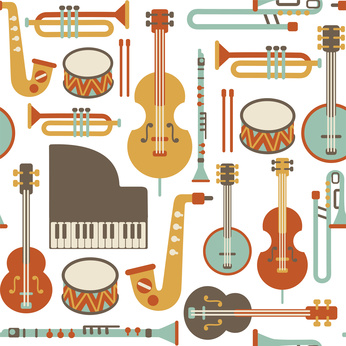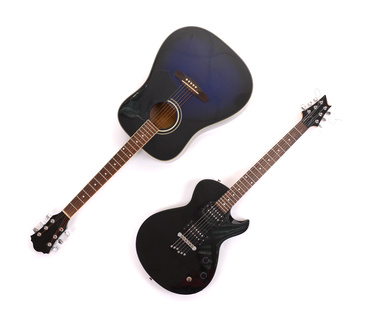 We teach piano, violin, singing, guitar, cello and more all in one location! Lesson times are first come, first serve so contact us today to arrange your first lesson!
We teach piano, violin, singing, guitar, cello and more all in one location! Lesson times are first come, first serve so contact us today to arrange your first lesson!
(626) 296-0799
Why is Piano a Popular Instrument for Beginning Students to Learn?
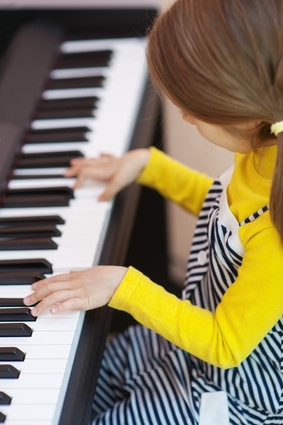 Musicians of all instruments will often say that their first experience with musical education was taking piano lessons as a child. What are some of the reasons that the piano is such a popular instrument for beginning students to learn?
Musicians of all instruments will often say that their first experience with musical education was taking piano lessons as a child. What are some of the reasons that the piano is such a popular instrument for beginning students to learn?
- It’s easy to start playing right away. Any student at any age can push a key on the piano and the note will sound. Other instruments require more complicated finger, arm, or breathing patterns to make a sound. Since the piano is easier to physically play, beginning students of piano will learn the fundamentals of music at a quicker pace than other instruments.
- It’s a fulfilling instrument for beginning students to learn. Because you can play more than one note on the piano, the music that a student will practice on piano is satisfying even at the beginning level. In addition, many pop and rock songs can be played on the piano.
- Musical concepts are visually apparent on a piano. The majority of fundamental concepts of music theory such half steps, scales, and chords are much easier understood on a piano than any other instrument.
- Piano students can successfully transition to any other instrument. Music students who begin their studies on piano can transition to any other musical instrument that they would like to learn. Since piano students will have learned how to read music in both bass clef and treble clef, the fundamentals of rhythm, as well as many other music basics, the transition will be smooth to learning the new instrument.
For information about piano lessons at the Altadena Academy of Music, please call (626) 296-0799 or use our email contact form.
Five Tips for Making Practice Fun
1. Play Practice Games.
It’s effective for young children to play a song or passage three times during a practice session. To make this more fun, draw a picture with three different places and have your child place a small toy on the picture. Each time a song is played well, your child can move the character to the next spot on the picture.
2. Revisit Old Favorites.
Revisiting songs that your child enjoyed and learned to play well builds confidence and makes practice fun. These songs should remain a part of regular practice even after the teacher considers them finished and has moved on to new pieces
3. Have the Student become the Teacher.
Ask your child to teach you how to play a song. Ask your child to show you the notes, how to play it, and give comments on how you sound.
4. Listen to Music.
You should consider every listening experience a part of music learning. Going to a local concert or playing your or your child’s favorite album and talking about what parts you enjoy and why can help your child develop an appreciation for music.
5. Try a New Activity.
Teachers have lots of worksheets and other tools to help your child learn music. In addition, we recommend getting a note speller book to practice notes and you can also find flashcards that will help learning music symbols.
For information about music lessons at the Altadena Academy of Music, please call (626) 296-0799 or use our email contact form.
Article about the Benefits of Childhood Music Lessons
We enjoyed this fascinating Huffington Post article about research studying the benefits of childhood music lessons.
Childhood Music Lessons Could Benefit Your Brain Later On
Tips for Practicing Musical Rhythm
Establishing a good sense of rhythm is important for beginning musicians. Here are some tips for helping young learners with rhythm in their at home practice.
1. Clap, tap or drum the rhythms of the songs that your child is working on prior to playing them on the instrument.
2. Encourage your child to practice her songs at an appropriate speed so that the rhythms are correct.
3. When listening to music, encourage clapping, marching or dancing to the beat.
4. Play rhythm games like tapping out a rhythm and then have your child clap it back. You can also look for musical rhythm game apps that you can download on your tablet or phone.
5. Make rhythm flash cards to practice the different note values or rhythmic patterns.
For information about music lessons at the Altadena Academy of Music, please call (626) 296-0799 or use our email contact form.
Looking for something fun to do this summer?
Choosing between Acoustic and Electric Guitar
Choosing between an acoustic and electric guitar for lessons often depends on the genre of music that a student wants to play. In general, acoustic guitar is great for classical, folk, country, and rock. Electric guitar is a great choice for learning pop, metal, and classic-rock guitar solos; however, any style of music can be learned on both the acoustic and electric guitar.
It’s important to keep in mind that if you choose the electric guitar, you will also need to purchase an amplifier to have for practice at home. By playing through an amplifier, you will be able to hear the guitar, control the volume and also take advantage of the various effects and sounds that an electric guitar can produce.
An acoustic guitar is a guitar that does not require the use of an amplifier. It can be played anywhere and at any time producing a full guitar sound. The strings for this type of guitar can vary depending on the style of music and sound that you want to get. You can use either nylon or wire strings on an acoustic guitar
For young beginners, we recommend using a guitar that has nylon strings because they are easier to push down and play for smaller hands. Young students also have the option of starting with a smaller size guitar that will better fit their hand and fingers. Both electric and acoustic guitars come in a half size and ¾ size version.
The chords and strings on both guitars are exactly the same, so you are always able to play both types of guitars. The only difference may be how you play the guitar. The electric guitar is often played with a pick. Acoustic guitars with nylon strings are played using your fingers, by plucking or strumming. Acoustic guitars with steel strings can be played with a pick or by using your fingers.
For information about guitar lessons at the Altadena Academy of Music, please call (626) 296-0799 or use our email contact form.
What do the three pedals on a piano do?
Piano students often have a curiosity about the three pedals that pianos have. What do these foot pedals on a piano do?
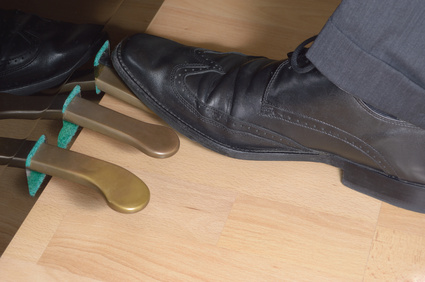 The right pedal is the most commonly used pedal by any type of pianist. It is often referred to as the damper or sustain pedal. Unless otherwise indicated in the music, this is the pedal that is expected to be used while playing. When the right pedal is pushed down, it prevents the dampers inside the piano from falling on the strings. The result is that any key(s) played will continue to sound while this pedal is being used; when the pedal is lifted, the dampers fall on the strings and the sound will stop. Pianists use this pedal for a variety of reasons including the ability to play several keys at once, connecting sound which would be difficult to do with just their fingers.
The right pedal is the most commonly used pedal by any type of pianist. It is often referred to as the damper or sustain pedal. Unless otherwise indicated in the music, this is the pedal that is expected to be used while playing. When the right pedal is pushed down, it prevents the dampers inside the piano from falling on the strings. The result is that any key(s) played will continue to sound while this pedal is being used; when the pedal is lifted, the dampers fall on the strings and the sound will stop. Pianists use this pedal for a variety of reasons including the ability to play several keys at once, connecting sound which would be difficult to do with just their fingers.
The left pedal is often called the soft pedal or una corda pedal. This is the second most used pedal on the piano; some upright pianos and electric keyboards come with just these two most commonly used pedals. The left pedal is used to get an overall softer volume on the piano. Normally, when a key is pushed on the piano, the hammer strikes three strings all for the same note. The left pedal shifts the hammers so that when the key is played, the hammer only strikes one of the strings (una corda) and the volume is softened.
The middle pedal, commonly called the sostenuto pedal, is most challenging of the three pedals. For grand pianos and electronic keyboards, the middle pedal is somewhat similar to the right pedal. The pianist chooses which keys to sustain by pressing the keys and then pressing the middle pedal. The chosen keys will continue to sound, while all other keys on the piano will continue to play as normal. Because the middle pedal is rarely used, many upright pianos have a different type of middle pedal. For these pianos, the pedal acts as a ‘practice pedal’. Pushing this pedal will greatly deaden the sound so that a student can practice very quietly and not disturb others in the room.
If your electric keyboard does not come with a pedal, you can often purchase an attachment that will plug into the back of your keyboard. The pedal attachment will function exactly like the right pedal on the piano. The advantage of having this pedal for your keyboard is that you will get to explore different sounds on the keyboard and get practice with the most commonly used pedal of the piano.
For information about piano lessons at the Altadena Academy of Music, please call (626) 296-0799 or use our email contact form.
The Keys to Practicing: Part III
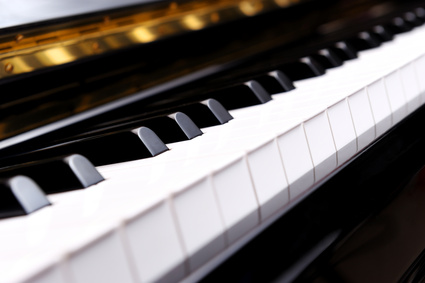 Below are four tips to vary your music practice routine and stay energized in your playing.
Below are four tips to vary your music practice routine and stay energized in your playing.
- Mix up your practice routine. If you are studying multiple songs, you can vary the order that you play the songs. On one day, you could play each song for a set amount of time before moving to the next. At the next practice session, you can play each of your songs once or twice in a row and then repeat the whole set.
- Avoid always playing from start to finish. On certain days, you can focus on just practicing the more difficult sections of a song. Then, at the next practice session try playing all the way through.
- Listen to your songs. Look for different performances, recordings or live versions of the songs that you are learning. This can renew your inspiration to work on the song or come up with some new ideas of how to play a certain section.
- Remember that you don’t have to play to be practicing. There are many other music activities that you can add to your practice routine that will benefit your playing. If you are learning to read music, you can practice sight reading and note names. You can also focus on just the rhythmic aspect of your songs by clapping or drumming.
For information about music lessons at the Altadena Academy of Music, please call (626) 296-0799 or use our email contact form.
Glimpse of Downtown L.A. Skyline from Walnut Trail
A beautiful February morning for hiking in Southern California.
 Taking in the view of the Los Angeles downtown skyline far in the distance while following the Walnut Trail in Eaton Canyon.
Taking in the view of the Los Angeles downtown skyline far in the distance while following the Walnut Trail in Eaton Canyon.
 For information about music lessons at the Altadena Academy of Music, please call (626) 296-0799 or use our email contact form.
For information about music lessons at the Altadena Academy of Music, please call (626) 296-0799 or use our email contact form.

